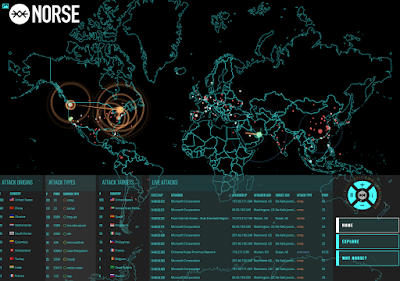Attack of the tools!
As part of my last post that showed who was attacking who
around the globe, in this post I will focus on the recent ransomware attacks. I’m
pretty sure we’ve all heard in the news of the WannaCry (https://en.wikipedia.org/wiki/WannaCry_ransomware_attack)
and Nyetya (http://blog.talosintelligence.com/2017/06/worldwide-ransomware-variant.html)
attacks and the devastating effects that this has caused to corporations and
people around the globe. For those that don’t know, these would be attackers
would try to gain access to your computer system by exploiting a vulnerability
in an un-patched Windows operating system. The attackers would then encrypt
your system rendering your files useless until you pay the ransom, hence
ransomware, for the decryption key. These payments are usually in the form of bitcoin
and it is nearly impossible to track who these attackers are and you are never
guaranteed to get the decryption key after paying the ransom. So, as part of
any data protection strategy, it is always good practice to regularly backup
your data to an external device or to the cloud so that in the event you do get
infected, you can just re-image your system and restore your data from your
last good backup and not pay the ransom. Yes, you may lose some data if the
infection occurred during the day as backups usually occur the night before but
at least you have a point in time which you can roll back to. That is better
than losing everything since day 1.
You might be wondering how can these attackers get
access to my system? Well, my dear Watson you can thank the NSA for that one.
Apparently, it was the NSA who developed such tools in the first place (DoublePulsar,
EternalBlue, just to name a few) to exploit vulnerabilities in Windows
operating systems and because these tools were leaked to the Dark Web by the
Shadow Brokers (https://www.theregister.co.uk/2017/04/21/windows_hacked_nsa_shadow_brokers/; https://www.cyberscoop.com/nsa-hacking-tools-shadow-brokers-dark-web-microsoft-smb/)
these would be hackers are using these tools for their own personal advantage.
So what can you do to protect yourself? It is imperative that you regularly update your
OS with the latest security patches, upgrade to the latest operating system
(why still use XP?), make sure anti-virus and anti-malware patches are
up-to-date and backup your data regularly. The next step is train people not to
open emails/attachments from someone they haven’t heard of. And the last step is
to subscribe to threat intelligence services that advise you on the attack, how
the attack occurred and what remedial steps you need to follow to ensure you
don’t get infected. I personally have subscribed to Cisco Talos (https://www.cisco.com/c/en/us/products/security/talos.html)
as I find they provide some of the most detailed analysis on cyberattacks. I
highly encourage you all to subscribe. Here is an example of their work on the
WannaCry attack (http://blog.talosintelligence.com/2017/05/wannacry.html)
and another that raised my eyebrows: http://blog.talosintelligence.com/2017/08/chinese-online-ddos-platforms.html


Comments
Post a Comment